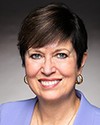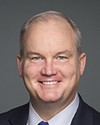Is there any discussion?
(Motion agreed to)
With respect to staff at in camera meetings, could I have a motion, Mr. Erskine-Smith?
Evidence of meeting #1 for Public Safety and National Security in the 42nd Parliament, 1st Session. (The original version is on Parliament’s site, as are the minutes.) The winning word was chair.
A recording is available from Parliament.
11:10 a.m.
Liberal

The Chair Liberal Rob Oliphant
Is there any discussion?
(Motion agreed to)
With respect to staff at in camera meetings, could I have a motion, Mr. Erskine-Smith?
11:10 a.m.
Liberal

Nathaniel Erskine-Smith Liberal Beaches—East York, ON
That each committee member in attendance be permitted to have one staff member present at any in camera meeting and, in addition, each party shall be permitted to have one staff member from a House officer attend in camera meetings.
(Motion agreed to)
February 4th, 2016 / 11:15 a.m.
Liberal
11:15 a.m.
Liberal

Pam Damoff Liberal Oakville North—Burlington, ON
That in camera meetings be transcribed and that the transcription be kept by the Clerk of the Committee for later consultation by members of the Committee.
(Motion agreed to)
11:15 a.m.
Liberal
11:15 a.m.
Liberal

Nicola Di Iorio Liberal Saint-Léonard—Saint-Michel, QC
That forty-eight (48) hours' notice be required for any substantive motion to be considered by the Committee, unless the substantive motion relates directly to business then under consideration; that the notice of motion be filed with the Clerk of the Committee and distributed to members in both official languages; and that motions received by 4 p.m. be distributed to members that same day.
(Motion agreed to)
11:15 a.m.
Liberal

Marco Mendicino Liberal Eglinton—Lawrence, ON
That at the discretion of the Chair, the witnesses from any one organization be allowed ten (10) minutes to make their opening statement.
We propose that there would be two rounds. Under round one, members of the Conservative Party would be allotted six minutes, then the government side six minutes, members of the NDP six minutes, and then the government side six minutes.
Then in the second round, first up would be members of the government side for six minutes, the Conservative Party for six minutes, back to the government side for six minutes, back to the Conservative Party for five minutes, and finally to the members of the NDP wishing to ask questions for three minutes.
11:15 a.m.
Conservative

Erin O'Toole Conservative Durham, ON
Thank you, Mr. Chair.
The official opposition would propose a slightly different scenario that would see an equal distribution but a more substantial first round, which was the tradition of the committees I sat on in the last Parliament. They used this approach of the first round being more substantive and the second round being shorter but with equal balance.
Our proposal would be to have the first round consisting of seven minutes for each party. We would permit the government side to lead off, followed by the Conservatives, the NDP, and then the government again, each having seven minutes, for round one.
Round two would then consist of the official opposition members leading off. To balance the time, they would have five minutes, followed by the Liberals for five minutes, followed by the Conservatives for five minutes, followed by the Liberals for five minutes and the NDP for three minutes.
11:15 a.m.
Conservative

Erin O'Toole Conservative Durham, ON
Mr. Chair, all sides of the procedure and house affairs committee agreed to this proposal, and it worked quite effectively. I'm not sure if it was the same approach in the parliaments you served in, but it makes the first round the longer round.
11:15 a.m.
NDP

Matthew Dubé NDP Beloeil—Chambly, QC
I don't have the document with me. Could Mr. O'Toole just go over the speaking times in the second round again?
11:15 a.m.
Conservative

Erin O'Toole Conservative Durham, ON
Here is the breakdown of speaking times in the second round: five for the Conservatives, five for the Liberals, five for the Conservatives, five for the Liberals and three for the New Democrats.
11:15 a.m.
Liberal

Nathaniel Erskine-Smith Liberal Beaches—East York, ON
Mr. O'Toole mentioned that traditionally the first round was more substantive, with seven minutes allotted per speaker.
Is there a reasoning behind that? I'm new to this.
11:15 a.m.
Conservative

Erin O'Toole Conservative Durham, ON
I recognize that, and I appreciate the question.
From my experience in the last Parliament, typically there would be two or three witnesses appearing. The presentations would be given. In the first round, at least in the committees I sat on, the seven-minute lead by both the government and the opposition would be the most substantial round. In the last Parliament, the parliamentary secretary would lead off.
I see we have him observing here today. That's an evolution, and that's fine.
The lead questioner for the government side starts off the lead round with seven minutes, followed by the other parties on an equal basis. For the second round, the opposition leads. Usually another witness is questioned in the second round. Sometimes all the witnesses are in favour of a certain proposal; sometimes there's a mixture of support and dissent. The first round allows for a little bit more time. The second round is usually split amongst the other witnesses appearing.
That's how it generally worked.
11:20 a.m.
Liberal

The Chair Liberal Rob Oliphant
If I may, sometimes you'll have a panel with two 10-minute presentations. That makes 20 minutes of presentation. Think about a two-hour meeting, and 20 minutes; you have about 100 minutes. That means you could get through four rounds, or almost four.
Sometimes you have a panel and then you do a round, because you've divided your meeting into an hour and then a second hour. It means you really do the first round twice on the same day.
Sometimes, just because of the nature of the meeting, you may go through the first round, get partway through the second round, and reach your time limit, because you have another witness going on. Sometimes you continue at the second round, then back up to the first round, just to make sure. Very frankly, that's often at the discretion of the chair.
Sometimes I have found, in the special committee I'm doing, that the NDP gets squeezed at the last, every time, in the second round. I've been trying to find a way to make sure we don't always cut off either the Liberal or the NDP. In the PROC rotation, you could lose that last eight minutes. We've been noticing that. I'm trying to find ways in that other committee to make sure that over time there's balance.
I think the basic decision is whether you want a longer first round of seven, seven, seven, seven, which has pluses and minuses to it. Sometimes seven feels very long for a new MP. You can split that time so that you each have three and a half minutes. It's a little easier, frankly, to split seven than five.
11:20 a.m.
Conservative

Erin O'Toole Conservative Durham, ON
Thank you for that context, Mr. Chair.
Perhaps I can add one thing. Some of you are lawyers who have practised. You can anticipate how long your questions are. But I'll tell you, some witnesses sometimes don't comply with how long you think their response will be. I had situations, when I was parliamentary secretary for trade, where I had a number of questions to ask in a seven-minute round. But on trade deals, where a union leader would go on about something, I got one question.
That extra minute in the first round doesn't seem like much, but if somebody is cut off in the second round, at least they had a first round that was as substantive as possible.
11:20 a.m.
Liberal

Marco Mendicino Liberal Eglinton—Lawrence, ON
Mr. Chair, I've quickly done the math on this.
It seems, by way of the amendment, the first round would be allocated 28 minutes and the second round would be allocated 23 minutes. But I think we had proposed at the outset that round one would have 24 minutes and round two would have 26 minutes. Somehow, there was some rounding here and we gained an extra minute. Presumably it should be evenly spread out. There's sort of a “plus one minute” gain to the first round.
11:20 a.m.
Liberal

The Chair Liberal Rob Oliphant
For all intents and purposes, it would be the same. You will find in my style of chairing that I am loath to cut off a witness mid-sentence or mid-paragraph, I like them to finish their thought. I'm not loath to cut off a member. If the witness starts at six minutes and 35 seconds and continues to seven minutes and 15 or 20 seconds, I allow that. That's been my practice. They're our witnesses, and I think we have to be generous. If you make a long statement and go over time, I'm pretty rigid on that. The 51 or 50 is not going to matter. The reality will be we'll get about 47 real minutes in because they take longer.
Is that your experience?
11:20 a.m.
An hon. member
Absolutely.
11:25 a.m.
Liberal

The Chair Liberal Rob Oliphant
I am starting to sense a consensus around following PROC. Am I judging that correctly?
I think, then, we could amend the motion that was presented and amended by Mr. O'Toole. We'll vote on the amendment, which is the speaking rotation as suggested by PROC.
11:25 a.m.
Liberal

The Chair Liberal Rob Oliphant
All in favour of the amendment?
(Amendment agreed to)
(Motion as amended agreed to)
Good. What a harmonious committee. Doesn't this bode well? Just wait.
Is there a motion on “Appending Dissenting/Supplementary Opinions to Committee Reports”?